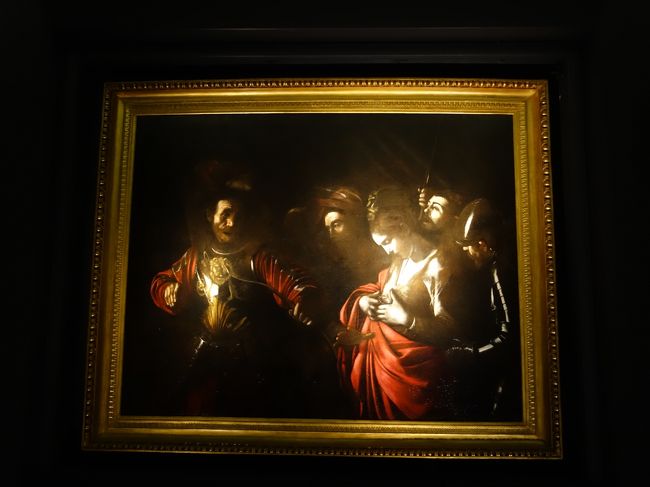
2019/10/29 - 2019/10/29
669位(同エリア1445件中)
![]()
nomonomoさん
- nomonomoさんTOP
- 旅行記5305冊
- クチコミ9084件
- Q&A回答332件
- 6,520,703アクセス
- フォロワー104人
この旅行記のスケジュール
2019/10/29
この旅行記スケジュールを元に
ナポリに来たからにはカラヴァッジョを見なくてはいけません。前回(昨年11月)は、カポディモンテ美術館に行ったので、今回は、セヴァロス・スティリアーノ宮美術館でカラヴァッジョを見ました。この光、この精神性。感動しました。
- 旅行の満足度
- 4.5
- 観光
- 4.5
- 交通手段
- 徒歩
- 旅行の手配内容
- 個別手配
-
カポディモンテ美術館は昨年の11月に行ったので,
https://4travel.jp/travelogue/11426553
今回は,ゼヴァロス スティリアーノ宮美術館に来ました。
正式名は、
Palazzo Zevallos Stigliano。ゼヴァロス スティリアーノ宮美術館 博物館・美術館・ギャラリー
-
中央に吹き抜けのある建物です。
-
天井。
Milano のPiazza Scala と Vicenza のPalazzo Leoni Montanari と三つで、Gallerie d'Italia を構成しています。G d'I がロゴマークです。切符にG d'I が大きく印刷されています。 -
コレクションの案内にそって、うつしてみます。
THE SEICENTO AND THE SETTECENTO
Climbing the grand staircase in Palazzo Zevallos Stigliano, we access the second floor, through which the exhibition route of the Gallerie d’Italia in Naples winds.
To Start With, the Last Caravaggio
Ideally, the itinerary departs from the Sala degli Stucchi (“Hall of Stuccoes”), which hosts the undisputed masterpiece of the collection: the tragic Martirio di Sant’Orsola (“Martyrdom of Saint Ursula”, 1610), painted in Naples by Caravaggio just over a month before his death. Here, the episode of the saint’s martyrdom is focused on its defining moment and reduced to the bare essentials, breaking out of the mould of the previous iconographic tradition. -
Luca Giordano and the Baroque turn
It was primarily the genius of Luca Giordano that brought new life to the painting tradition of the first half of the 17th century, which. was still relying on a naturalistic vein derived from Caravaggio. Beginning in the years following the serious plague in 1656, he was able to impress a determined turn towards the Baroque to the local artistic milieu, even by retrieving the Roman sources of that style.
The monumental Rape of Helen, hitherto hardly known to the wide public due to the few places and exhibitions suitable for its huge dimensions, constitutes an excellent example of Giordano's typical production of mythological and literary themes. Yet, this work still bears witness to a returning influence of Ribera's Realism: this tendency has to be related to the mid 1660s, when Giordano began to adopt systematically the Spanish painter's techniques, urged by the market and by the tenebrist fashion, as recent studies have clearly demonstrated.
In The Immaculate Conception the dissipation of the pictorial material into light is taking place. This process is in evidence in Giordano's oeuvre from the beginning of the 1680s. -
The Protagonists of the Neapolitan Seicento
The tour continues with the Sala degli Amorini, which owes its name to the presence of putti (or “amorini”) in the decoration of the vaulting, accompanied by an opulent wall frieze that runs along the perimeter of the room.
Visitors to this hall find themselves face-to-face with our 17th-century collection capable of outlining the main vicissitudes of painting in Naples throughout the century: from the naturalistic shift brought about by Caravaggio’s 1606 arrival in Naples all the way down to the magnificence of the Baroque season.
Amongst the treasures kept here:
Judith Beheading Holofernes, attributed to Louis Finson, a Flemish artist who painted in the Caravaggesque style
the solemn Saint George by Francesco Guarini, set somewhere between Massimo Stanzione’s patrician grace and Jusepe de Ribera’s intense realism
Samson and Delilah, typical creation of Artemisia Gentileschi ?a tragic, extraordinarily intense painter of the Italian Seicento ?and her repertoire of female heroines. -
なかなか立派なコレクションがそろっています。
-
The Baroque Art of Luca Giordano
We owe the renewal of the painting tradition mainly to the brilliance of Luca Giordano, who was behind the crucial shift towards the Baroque.
Amongst his masterpieces, the monumental Rape of Helen (c. 1660) is an excellent example of the production of literary-mythological characters typical of his career.
An exemplary stage in the continuation of the Baroque direction started off by Luca Giordano is undoubtedly represented by Francesco Solimena’s stunning canvas depicting Hagar and Ismael in the Desert Comforted by the Angel (c. 1690). Despite its pictorial exuberance, the work conveys the quest for a resoluteness and nobility in drawing that heralded the classic tendencies of the new century.
Francesco Di Maria’s artwork belongs to an alternative academic line compared to Giordano’s pictorial exuberance; we can admire his Cristo benedicente (c. 1658), inspired by principles of drawing precision and classic order.
Between Still Lifes and Pitture Ridicole
The still life represents one of the main components of the collection of the Gallerie d’Italia in Naples. This art genre is illustrated by a small yet incisive selection of paintings, including two Sottoboschi (“Underwoods”, c. 1650-1656) by Paolo Porpora ? Italian pioneer of the specialty ? and two renowned compositions by the more famous and versatile painter Giuseppe Recco.
Standout works from the Settecento include the two paintings by Gaspare Traversi, Neapolitan by birth and training, but permanently based in Rome as of the 1750s: La lettera segreta and Il concerto, (“The Secret Letter” and “The Concert”, both c. 1755-1760) belong to the repertoire most typical of his production, which can be set within the genre of the “pitture ridicule” (“ridiculous paintings”) so dear to comic-popular tradition.
Van Wittel’s Vedute of Naples
The Sala degli Uccelli (“Hall of Birds”) of the Gallerie d’Italia houses paintings that outline the history of representation of Naples and the Campania region between the 18th and 19th centuries.
The exhibition starts off with four canvases by Dutch artist Gaspar van Wittel, regarded as one of the founders of modern vedutismo, based on the nearly topographical precision of painted scenes. The Veduta di Napoli con Largo di Palazzo (“View of Naples with Building Square”, first quarter of the 18th century) and the Veduta di Napoli con il borgo di Chiaia da Pizzofalcone (“View of Naples with the Village of Chiaia da Pizzofalcone”, 1729) ? extraordinary for their accuracy and overall breadth ? are especially noteworthy. -
バロックかな。
-
The Schools of Landscape Painting: Posillipo and Resina
-
風景画。
-
風景画。
-
風景画。
-
いよいよ、カラヴァッジョです。
CARAVAGGIO (Michelangelo Merisi)
Milano 1571. ? Porto Ercole 1610
Martirio di sant'Orsola /The Martyrdom of Saint Ursula
1610
olio su tela / oil on canvas
Caravaggio's tragic Martydom of Saint Ursula certainly the absolute summit of the collection of Intesa Sanpaolo. It was the painter's last work, completed in Naples in May 1610, a little more testifying to the Lombardian artist's activity in Naples, along with the Seven Works of Mercy for the Church of Pio Monte della Misericordia and The Flagellation of Christ for the Church of San Domenico Maggiore, now kept at the Museum of Capodimonte.
Accordthg to the narrative Saint Ursula was a Christian Breton princess murdered in Cologne, on her way back from a pilgrimage with eleven thousand virgins, by a Hun king who had fallen in love with her. The canvas focuses on the episode at the moment of culmination and yet is reduced to the essential, departing from the schemes of the previous iconographic tendencies. Among the witnesses to the dramatic scene is the painter himself, whose self-portrait appears on the right side, behind the Saint, as if he foreboded his impending death.
The work was commissioned by Prince Marcantonio Doria through his Neapolitan agent, Lanfranco Massa, and hastily shipped to Genoa after leaving the painter's atelier still wet (which accounts for its problematic preservation) It also went through a sequence of complicated events before it was acquired by the Banca Commerciale Italiana in 1972. At that time it was thought to be a painting by Mattia Preti. Its actual attribution and crucial meaning in history were definitely established through archival research in 1980.
Over the centuries the canvas had suffered several alterations ? damages, expansions, repaintings ? which had resulted in a different texture. In order to remedy this situation the Bank finally promoted a radical restoration, which was carried out by the Istituto Superiore per la Conservazione ed it Restauro di Roma between 2003 and 2004. As a consequence, the original.
consistency of the image, now more faithful and close to the
author's intentions, was brought back. -
説明の続き。
-
IL MARTIRIO DI SANT’ORSOLA (THE MARTYRDOM OF SAINT URSULA)
『聖ウルスラの殉教』 -
On the second floor of Palazzo Zevallos Stigliano, the elegant Sala degli Stucchi (“Hall of Stuccoes”) hosts the jewel of the permanent collection of the Gallerie d’Italia ? Palazzo Zevallos Stigliano in Naples: we are speaking of the Martirio di Sant’Orsola (“The Martyrdom of Saint Ursula”), Caravaggio’s last work, which depicts the defining moment in the slaying of Ursula, transfixed by an arrow shot by the king to whom she had refused to give herself.
-
In 1610, Michelangelo Merisi found himself in Naples for the second time in his life, after his 1606-1607 sojourn; he painted several public and private works here, including the Martyrdom, commissioned by Genoese collector Marco Antonio Doria. The painting was dispatched to its new owner in a rush with its paint still wet ? thus giving rise to its complicated preservation history.
-
The painting arrived safely in Genoa ? where it was received almost tepidly, amongst general indifference ? in June of the year 1610. It remained in the city of the Doria family until 1832, when it finally returned to Naples in the wake of complex inheritance issues.
-
『聖ウルスラの殉教』
-
カラヴァッジョの、(実質的な)最後の作品です。
-
光の具合と色合いが、実物は、画集とは、ぜんぜん違う。
-
光がすごい。
-
カラヴァッジョの光です。
-
油絵でこんな光を作るのです。
-
Caravaggio's tragic Martydom of Saint Ursula certainly the absolute summit of the collection of Intesa Sanpaolo. It was the painter's last work, completed in Naples in May 1610, a little more testifying to the Lombardian artist's activity in Naples, along with the Seven Works of Mercy for the Church of Pio Monte della Misericordia and The Flagellation of Christ for the Church of San Domenico Maggiore, now kept at the Museum of Capodimonte.
Accordthg to the narrative Saint Ursula was a Christian Breton princess murdered in Cologne, on her way back from a pilgrimage with eleven thousand virgins, by a Hun king who had fallen in love with her. The canvas focuses on the episode at the moment of culmination and yet is reduced to the essential, departing from the schemes of the previous iconographic tendencies. Among the witnesses to the dramatic scene is the painter himself, whose self-portrait appears on the right side, behind the Saint, as if he foreboded his impending death. -
The work was commissioned by Prince Marcantonio Doria through his Neapolitan agent, Lanfranco Massa, and hastily shipped to Genoa after leaving the painter's atelier still wet (which accounts for its problematic preservation) It also went through a sequence of complicated events before it was acquired by the Banca Commerciale Italiana in 1972. At that time it was thought to be a painting by Mattia Preti. Its actual attribution and crucial meaning in history were definitely established through archival research in 1980.
Over the centuries the canvas had suffered several alterations ? damages, expansions, repaintings ? which had resulted in a different texture. In order to remedy this situation the Bank finally promoted a radical restoration, which was carried out by the Istituto Superiore per la Conservazione ed it Restauro di Roma between 2003 and 2004. As a consequence, the original. -
すごい。感動します。
-
G d'I のロゴマーク。
-
特別展もやっていました。
-
現代美術です。
-
中央の吹き抜け。
-
玄関。
-
お疲れ様でした。
ゼヴァロス スティリアーノ宮美術館 博物館・美術館・ギャラリー
-
さあ、ランチに行きましょう。
ナポリ歴史地区 旧市街・古い町並み
この旅行記のタグ
利用規約に違反している投稿は、報告する事ができます。
旅行記グループ
ノルウェージャン・エピック西地中海クルーズ
-
前の旅行記
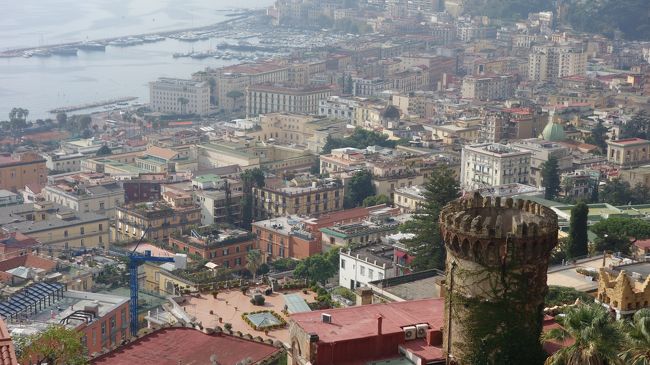
ナポリにきたら高いところに上りましょう。フニクラでヴォメロの丘へ。
2019/10/29~
ナポリ
-
次の旅行記

サンタ・キアーラ教会の回廊・庭園を見る。陶板タイルの装飾がうつくしい。
2019/10/29~
ナポリ
-
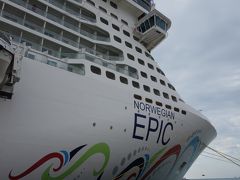
Norwegian Epic で地中海クルーズ。(総集編)
2019/10/27~
バルセロナ
-
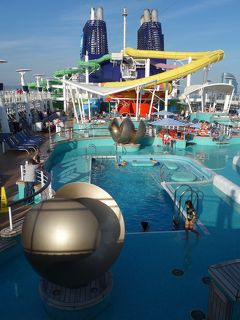
Norwegian Epic の船内探検(1)。カジュアル船です。アメリカ文化そのものです。
2019/10/28~
カプリ島
-

Norwegian Epic の船内探検(2)。食事は良かったり、イマイチだったり。
2019/10/28~
ポンペイ
-

Norwegian Epic の船内探検(3)。カフェテリアは中国語が飛び交っていた。
2019/10/28~
フィレンツェ
-
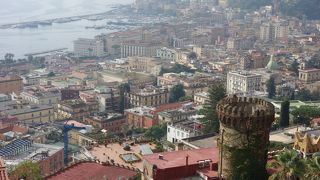
ナポリにきたら高いところに上りましょう。フニクラでヴォメロの丘へ。
2019/10/29~
ナポリ
-
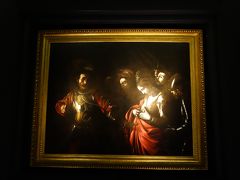
カラヴァッジョ最後期の作品を見る。魂の深さに感動する。
2019/10/29~
ナポリ
-

サンタ・キアーラ教会の回廊・庭園を見る。陶板タイルの装飾がうつくしい。
2019/10/29~
ナポリ
-

ナポリのランチは,もちろん,ナポリ・ピザ。ダ・ミケーレまで歩いていったのですが。。。。
2019/10/29~
ナポリ
-

ナポリにきたら,ババをいただきましょう。ババ抜き,ではナポリに来たことになりません。
2019/10/29~
ナポリ
-

トレド通りを歩く。ナポリの王道です。
2019/10/29~
ナポリ
-

スパッカ・ナポリを歩く。ナポリの下町です。
2019/10/29~
ナポリ
-

ウンベルト1世のギャッレリア,プレビシート広場とヌオーヴォ城を見て,我が家(船)に帰る。
2019/10/29~
ナポリ
-

Civitavecchia から Tarquinia まで路線バスを乗り継いで。初めての土地で。。。
2019/10/30~
チビタベッキア
-
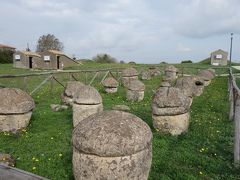
Tarquinia。エトルリア文明の遺跡を求めて。
2019/10/30~
ラツィオ州
-

Tarquinia のエトルリア文明の遺跡。高松塚を思い出す墳墓内の壁画。
2019/10/30~
ラツィオ州
-

Tarquinia のエトルリア文明の遺跡。(2) 壁画がすばらしい。紀元前にこの文明。
2019/10/30~
ラツィオ州
-

Tarquinia は城壁に囲まれた丘の上の都市。塔もおおい。
2019/10/30~
ローマ
-
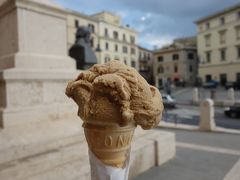
Tarquinia の国立博物館をみる。そして,ジェラートで一服。いい街です。
2019/10/30~
ローマ
-

Tarquinia から Civitavecchia までバスで帰る。帰りは直通です。船の近くで下りました。
2019/10/30~
その他の観光地
-

Norwegian Epic の船内探検(4)。フレンチ・レストラン Le Bistro はおいしかった。
2019/10/31~
シチリア島
-

Livorno からLucca まで鉄道の旅。Pisa で乗り換えです。
2019/10/31~
リボルノ
-

Lucca では,まず,ドゥオーモを目指す。
2019/10/31~
ルッカ
-

Luccaでピサ・ルッカ様式の教会を見る。
2019/10/31~
ルッカ
-
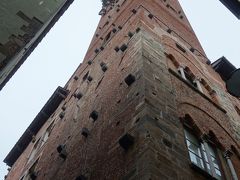
Lucca では、塔に登りたかったのですが、あいにくの雨で、割愛。
2019/10/31~
ルッカ
-
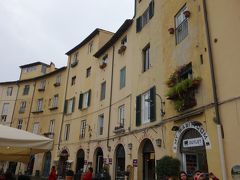
ローマの競技場跡。Piazza Anfiteatro. 広場を取り巻く建物群がおもしろい。
2019/10/31~
ルッカ
-

ルッカ。今日はハロウィーン。コスプレの人で、街はあふれかえっていました。
2019/10/31~
ルッカ
-

Lucca から Pisa まで鉄道のたび。こわい検札のおじさんが回ってきました。
2019/10/31~
トスカーナ州
-
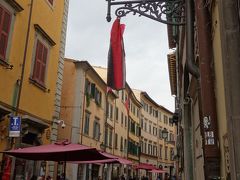
Pisa の街歩きは Corso Italia から始まります。そう,イタリアの中心なのです。
2019/10/31~
ピサ
-

Pisaで途中下車。目的は,もちろん,世界一のジェラートを食べるためです。
2019/10/31~
ピサ
-

Norwegian Epic の船内探検(5)。船内盛り上がりはイマイチ。別れが悲しくなかった。
2019/11/01~
メッシーナ
旅行記グループをもっと見る
コメントを投稿する前に
十分に確認の上、ご投稿ください。 コメントの内容は攻撃的ではなく、相手の気持ちに寄り添ったものになっていますか?
サイト共通ガイドライン(利用上のお願い)報道機関・マスメディアの方へ 画像提供などに関するお問い合わせは、専用のお問い合わせフォームからお願いいたします。
この旅行で行ったスポット
ナポリ(イタリア) の旅行記
旅の計画・記録
マイルに交換できるフォートラベルポイントが貯まる
フォートラベルポイントって?


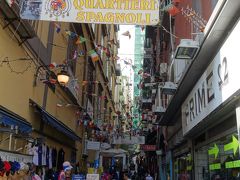






































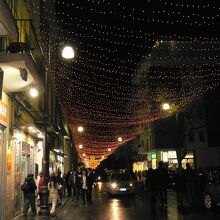









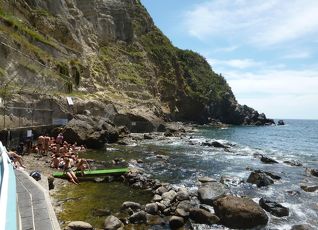


旅行記グループ ノルウェージャン・エピック西地中海クルーズ
0
35